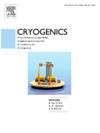储热机组换热器配置及运行条件对液气储能的影响
IF 2.1
3区 工程技术
Q3 PHYSICS, APPLIED
引用次数: 0
摘要
本文研究了一种效率大于0.9的蓄热装置(TESU)。建立了一个热扩散模型来精确预测TESU的热行为并确定其详细规格。在此模型的基础上,设计并制造了TESU进行实验室规模的实验。在30 bar的工作压力下,对TESU进行了不同穿梭质量(6 g - 18 g)的低温氮气测试。在实验条件下,该范围内的质量流量越高,TESU的效率越高。采用螺旋板式换热器代替盘管式换热器,减少了热死体积,提高了热交换效率,从而提高了换热器的热性能。每个螺旋板式或盘管式换热器的效率分别达到0.92或0.82。热模型与实验的对比分析揭示了工作条件对热死体积的强烈影响,强调需要针对LAES系统的具体要求进行精确的TESU设计。经验证的热扩散模型表明,将换热器内的温度不均匀性最小化可以减少由热扩散引起的熵产和火用损失。实验结果表明,该方法可实现TESU的高效值,并可推广到实际规模的LAES系统中。本文章由计算机程序翻译,如有差异,请以英文原文为准。
Effect of heat exchanger configuration and operating conditions of thermal energy storage unit for liquid air energy storage
This paper presents the study on a thermal energy storage unit (TESU) with its effectiveness greater than 0.9. A heat diffusion model is developed to predict the precise thermal behavior of the TESU and determine its detailed specifications. Based on this model, the TESU is designed and manufactured for laboratory-scale experiments. The TESU is tested with various shuttle masses (6 g–18 g) of cryogenic nitrogen at an operating pressure of 30 bar. Under the experimental conditions, a higher mass flow rate in the range increases the efficiency of the TESU. Using the spiral-plate type heat exchanger instead of the coil type improves thermal performance by reducing the thermally dead volume and enhancing the active heat exchange. The effectiveness of each spiral-plate type or coil type heat exchangers is achieved up to 0.92 or 0.82, respectively. The comparative analysis between the thermal model and the experiments reveals the strong influence of the operating conditions on thermally dead volume, emphasizing the need for precise TESU design tailored to the specific LAES system requirements. The validated heat diffusion model shows that minimizing temperature non-uniformity in the heat exchanger reduces entropy generation and exergy loss due to heat diffusion. This study experimentally demonstrates the feasibility of achieving high effectiveness value of a TESU and suggests that the proposed approach should be extended to actual-scale LAES systems.
求助全文
通过发布文献求助,成功后即可免费获取论文全文。
去求助
来源期刊

Cryogenics
物理-热力学
CiteScore
3.80
自引率
9.50%
发文量
0
审稿时长
2.1 months
期刊介绍:
Cryogenics is the world''s leading journal focusing on all aspects of cryoengineering and cryogenics. Papers published in Cryogenics cover a wide variety of subjects in low temperature engineering and research. Among the areas covered are:
- Applications of superconductivity: magnets, electronics, devices
- Superconductors and their properties
- Properties of materials: metals, alloys, composites, polymers, insulations
- New applications of cryogenic technology to processes, devices, machinery
- Refrigeration and liquefaction technology
- Thermodynamics
- Fluid properties and fluid mechanics
- Heat transfer
- Thermometry and measurement science
- Cryogenics in medicine
- Cryoelectronics
 求助内容:
求助内容: 应助结果提醒方式:
应助结果提醒方式:


